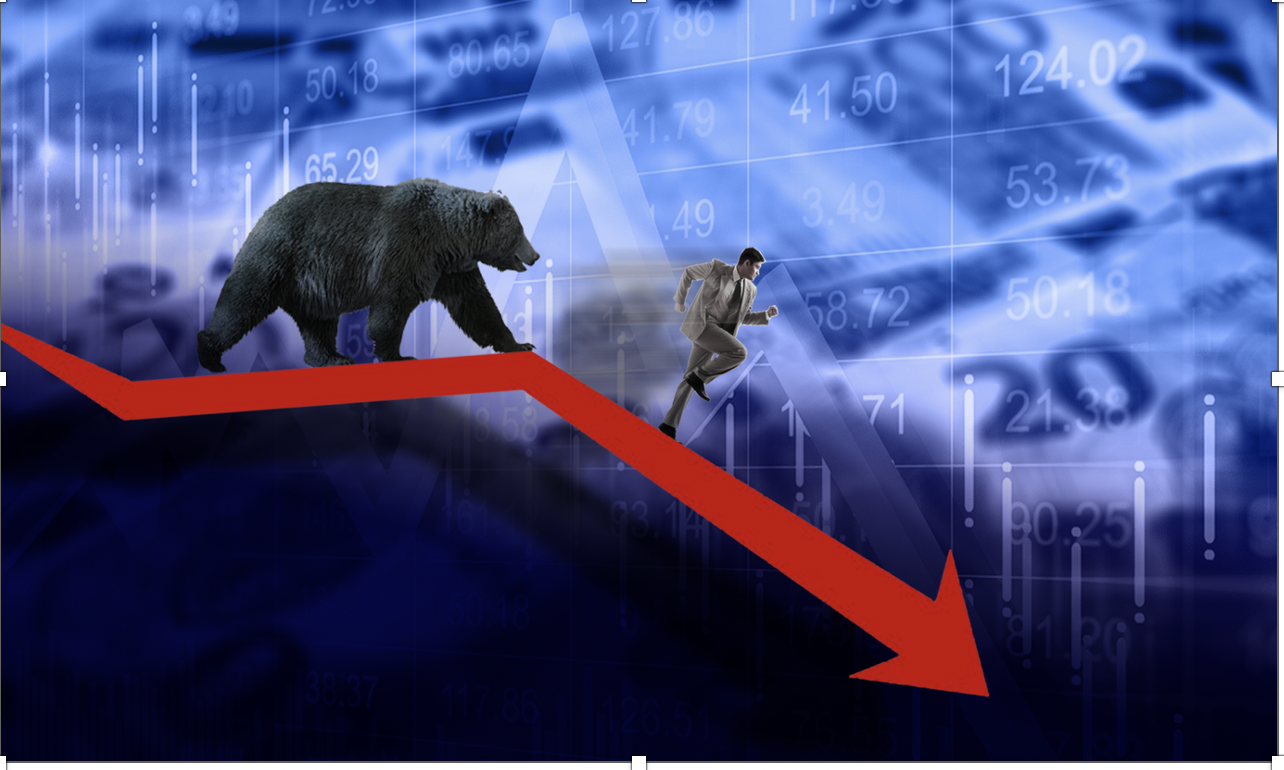How to survive bear market ?
As reflected in the Standard & Poor’s 500 and the Nasdaq Composite Index, a Bear Market is commonly defined as a stock market decline of 20% or more from its recent highs. Factors such as weak or declining economy, pandemics, wars, interest rate hikes, oil price movements, bursting market bubbles and unexpected high inflation figures can all contribute to a bear market.
For many investors, seeing their portfolio marks turning red creates an alarming situation, and this makes them want to pull out their investments as quick as possible to avoid further losses. But analysts consider this as a wrong strategy.
Considering the market situation as of today, experts predict that a recession could be right around the corner. So, what can an individual do to cushion the losses and even make money in a bear market?
Let us consider the possible strategies.
Dollar – Cost Averaging
The most crucial thing to keep in mind during an economic slowdown is that it is completely normal for a stock market to have a few negative years as a part of the business cycle. If an individual is a long-term investor, he or she can take the advantage of Dollar – Cost Averaging.
This strategy tries to minimize the risks by building a position in the market over time. Here the investment is broken into several pieces and a portion of that money is invested into the market at equal time intervals instead of putting all of it into the market at once. This strategy can be a powerful tool by removing some of the emotional barriers to investing.
One can use this strategy for any investment, be it stocks, mutual funds, or exchange – traded funds. Dollar – Cost averaging works best in bear markets and with those stocks that suffer frequent fluctuations.
However, there are few decisions one needs to make before investing using this technique:
- How much money need to be invested?
- How often the investment is to be done?
- How many periods the investment to be split – over?
Overall, dollar – cost averaging is beneficial if an investor needs to reduce investment anxieties, avoid timing the market and increase his or her net worth by building a strong portfolio.
Diversification
Having a percentage of portfolio spread around stocks, bonds, cash, and alternative assets is the core of diversification. For investors who have diverse range of assets in their portfolio, the impact of bear markets may not be as severe.
When bear markets are fully in progress, the prices of assets fluctuate but not by the same amount. This strategy ensures that the investor has a mix of both winners and losers during a bear run. Hence, total losses from the portfolio becomes bare minimum.
A proper asset allocation strategy allows one to avoid the potential negative effects resulting from putting all the eggs into one nest.
Consider Defensive Stocks
Those stocks that provide consistent dividends, and stable earnings regardless of the state of the overall stock market are termed as defensive stocks. The investors believe that these stocks are subject to outperform the market even during periods of market turbulence.
During prolonged bear markets, some companies mostly smaller tire out along the way. Whereas more established firms with strong balance sheets withstand the harsh conditions & tends to go a long way.
Hence one should invest in those company stocks that have well-established businesses for a long time. These defensive stocks are usually more stable and reliable in an uneven market situation.
Think Long-Term
One of the worst things that one can do is make quick reactions to market situations. When a stock plunges, it seems as if it will keep on falling forever and it is our instinct to sell before it gets worse. It is common knowledge that the main goal of investing is to buy low and sell high. But by reacting emotionally to market swings, we do the opposite of what needs to be done. Hence, one should invest in stocks for a long run and do not simple sell them when prices go down.
Bear Market Examples
Bear markets are quite common. Since 1900, there have been 33 of them, and they occur every 3.6 years in US on an average.
- 2000-2002 Dot Com Crash – Growing use of internet in the late 1990s led to a massive speculative bubble in technology stocks. Nasdaq was hit especially hard during this period. By late 2002, it was fallen by 75% from its previous high.
- 2008-2009 Financial Crisis – Due to a wave of subprime mortgage and the subsequent packaging of these loans into investable securities, a financial crisis spread around the globe in 2008. By its march 2009 lows, S&P had fallen by more than 50% from its previous highs.
- 2020 Covid-19 Crash – The 2020 bear market was triggered by Covid-19 pandemic spreading across the globe and causing economic shutdowns in huge global economies. Because of the speed by which the economic uncertainty spread, the stock market plunged into a bear market.
Bottom Line
To conclude with, over the long run, the stock market tends to go up and the economy grows. These downturns have always ended and ultimately reversed reaching new highs. By investing into bear markets, one can buy stocks which are priced lower and can accumulate stronger positions.
Investors should try to always separate their emotions before making investment decisions. What seems like a massive global catastrophe one day will be remembered as nothing more than a slip. By purchasing shares regardless of the price, one can end up buying shares at a low price. In the long run, the cost will average-down, leaving better overall entry prices.
There is an old saying that the best thing to do during a bear market is to play dead. By staying calm and not making any sudden moves, one can enjoy huge profits. Slicing up your portfolio based on risk tolerance, goals, etc could result in avoiding potential negative effects.
Instead of trying to time the market and throwing all the money at once, a better strategy during a bear market is to build positions over time, even if the prices are too low.
When the bear markets hit, companies often go out of business. Hence it is important to invest in quality stocks with rock solid balance sheets.
As an investor, there is probably nothing one can do to prevent unfavourable market conditions or the uncertain economy. However, there are many great moves and investment strategies that one can make to protect their investments and take advantage of the falling prices.
Good strategic investment planning mixed with patience could ensure profits when the markets turn around. Finally, the best way to get through market dips is by taking a note of wide array of investment options and remain composed.






